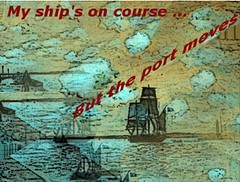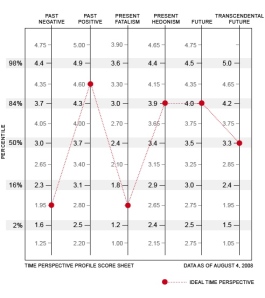Right you are….
Going from A to B in life is like a risk management game.
As the captain of your Body&Mind-Ship (BMS) heading for a New Land at Port Novaya Zemlya, you’ll have three starting issues:
Three starting issues
- Define your target (B): Know where you want to go in life
- Define your starting point (A): Know Where an Who you are in life
- Define your Route: Know How you want to go from A to B
In terms of risk management there are two main targets:
Main Risk Management Targets
- Long term Target
Reach your final target (Novvaya Zemlya) - Short term Target
Avoid short time risks, tackle problems along the way (avoid ice floes)
So, what kind of approach is right for reaching your goal?
- If you concentrate too much in life on your ‘final goal’ or you want to achieve your goals too fast or too direct, you’ll certainly hit a short term problem, like an ice floe, and end up crashed as a hero or a martyr.
- If you concentrate too much on the short term problems in your life, you’ll loose sight on your final goal and certainly fail to reach Novaya Zemlya.
The optimal route?
But what is the best strategy for finding the optimal route in life?
Take a look at the next map to find out the best strategy for this ship.

The most logical route from A to B would of course be a straight line. However following this line as a blind man would certainly lead to failure.
Strategy II: Keep as much is possible to the straight line
As BMS captain might look like the ‘best strategy’ solution. This is how we often directly respond in life when we do not succeed in getting what we want the way we planned it.
Often this route is 2 to 3 times longer than the ‘straight line route’ and does not always guarantee that you reach your goal in the labyrinth of life.
As mostly in life , the best advice is….
Strategy III: Get help and plan!
As BMS captain with the right attitude and perseverance to succeed, you consult your friends and foes and draw yourself the best possible satellite map, so that you’ll be able to oversee the ‘seascape’ of your life, with all relevant problems, like ice foes ahead.
Often this optimal ice route is 1.5 times longer than the ‘straight line route’, but it guarantees the highest success rate.

But what to do if you have no information at all? That’s when thinking and mathematics come in, or it gets time for an alternative approach before you freeze in reaching for Novvaya Zemlya….




 As expected, most students wanted the combo deal (84%). Students can read, so nobody wanted the middle option.
As expected, most students wanted the combo deal (84%). Students can read, so nobody wanted the middle option. Now the most popular option (84%) suddenly became the least popular (32%). And the least popular (16%) became the most popular (68%) option.
Now the most popular option (84%) suddenly became the least popular (32%). And the least popular (16%) became the most popular (68%) option. The answer was absolutely
The answer was absolutely 


 When we grow old, the past will influence and determine our actions more and more until our last phase in life, where future and present transform in a kind of transcendental state. In this stage your present and
When we grow old, the past will influence and determine our actions more and more until our last phase in life, where future and present transform in a kind of transcendental state. In this stage your present and 


 It’s just like climbing the “moving stairs” at the fair.
It’s just like climbing the “moving stairs” at the fair.


